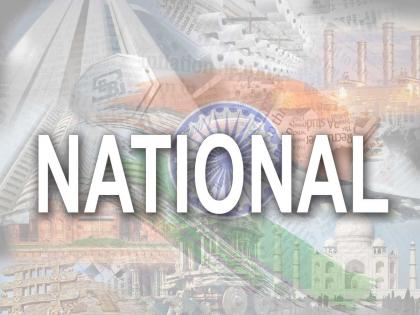Delhi air turns 'Hazardous', AQI 999 at Mother Dairy
By IANS | Published: October 28, 2019 01:52 AM2019-10-28T01:52:05+5:302019-10-28T02:00:04+5:30
Air in Delhi turned "Hazardous" during Diwali on Sunday with the Air Quality Index (AQI) was recorded 999 at Mother Dairy in Patparganj area. Emission from firecrackers and stubble burning in adjoining areas of National Capital Region increased the pollution level. The situation is expected to be worsen in coming week.

Delhi air turns 'Hazardous', AQI 999 at Mother Dairy
According to the AQI data, recorded till 11 p.m., the pollution level at the National Malaria Institute, Dwarka was 763 with high number of PM 10 (tiny particulate matter of diameter 10 micron or less).
At ITI Jahangirpuri, the pollution level was 407 followed by Srinivaspuri at 313, both in poor category.
In Chanakyapuri area where US embassy is located, the AQI was 189 at 8 p.m. and at Jawahar Lal Nehru Stadium it was 168.
At no place, the AQI monitors showed less than 100. This data was compiled by AQI monitors.
Earlier during the day, the AQI was 313 at 9 a.m, 337 at 1 p.m. On Saturday too, the air quality was in the very poor category.
Due to emission from firecrackers and stubble burning in adjoining areas of the NCR, the pollution situation is expected to worsen in the coming week. A thin layer of haze is already hanging over Delhi.
The PM 10 (tiny particulate matter of diameter 10 micron or less) matter reached the high of 515 mcg at Anand Vihar as per the Delhi government's air quality monitors.
In Wazirpur, the PM 2.5 matter crossed the 400-mark. Twenty-nine of the 37 air quality stations reported very poor AQI.
In 2018 Diwali, the AQI had crossed the 600-mark, 12 times the safe limit.
As per data, the AQI between 0 and 50 is considered safe, 51-100 satisfactory, 101-200 moderate, 201-300 poor. At 301-400, its considered very poor and 401-500 falls in the severe category.
The above 500 is severe as well as the emergency category.
Mid-October to November is considered critical days for Delhi's air quality due to stubble burning in neighbouring states and emissions from firecrackers in Diwali.
( With inputs from IANS )
Open in app